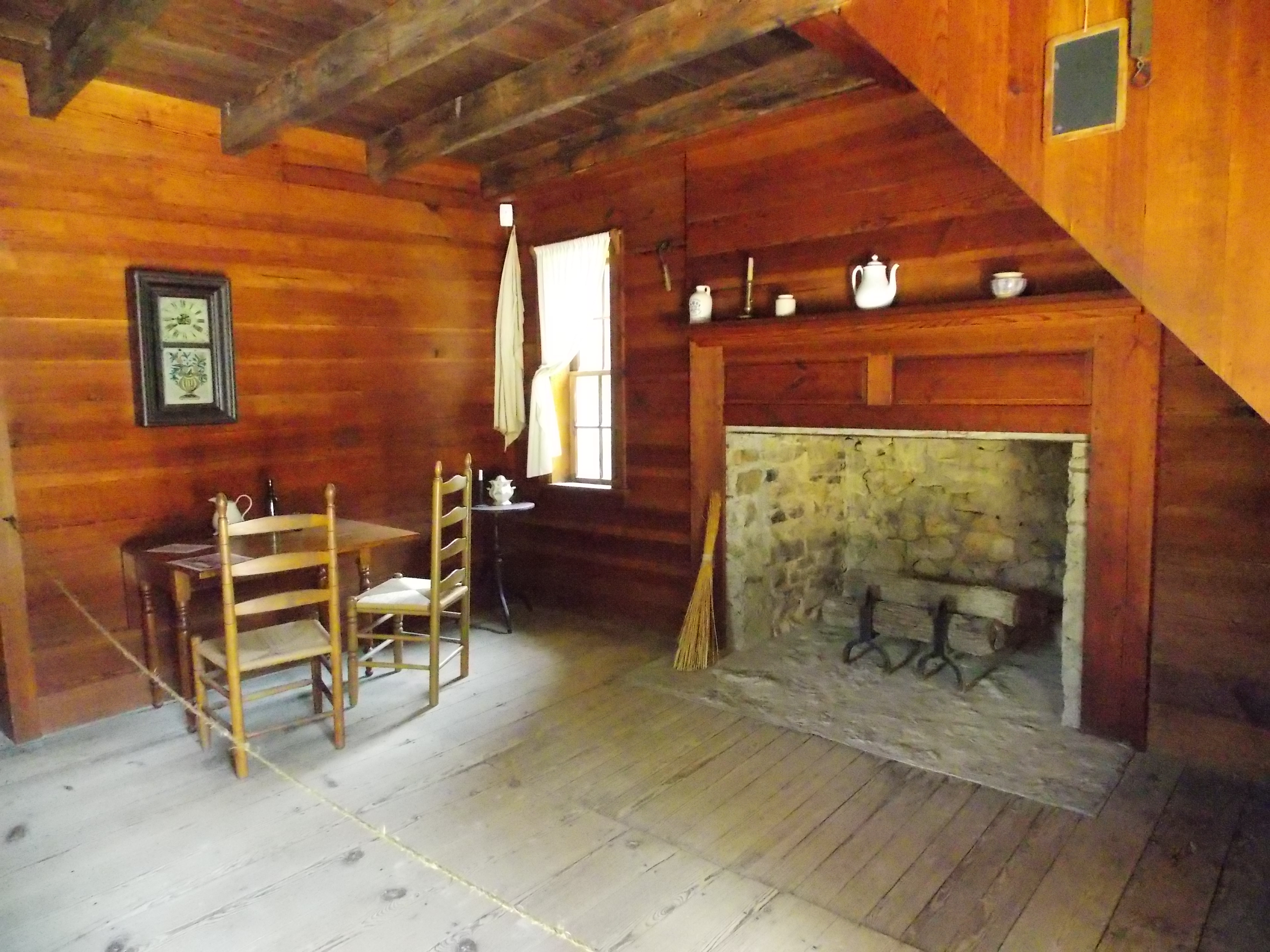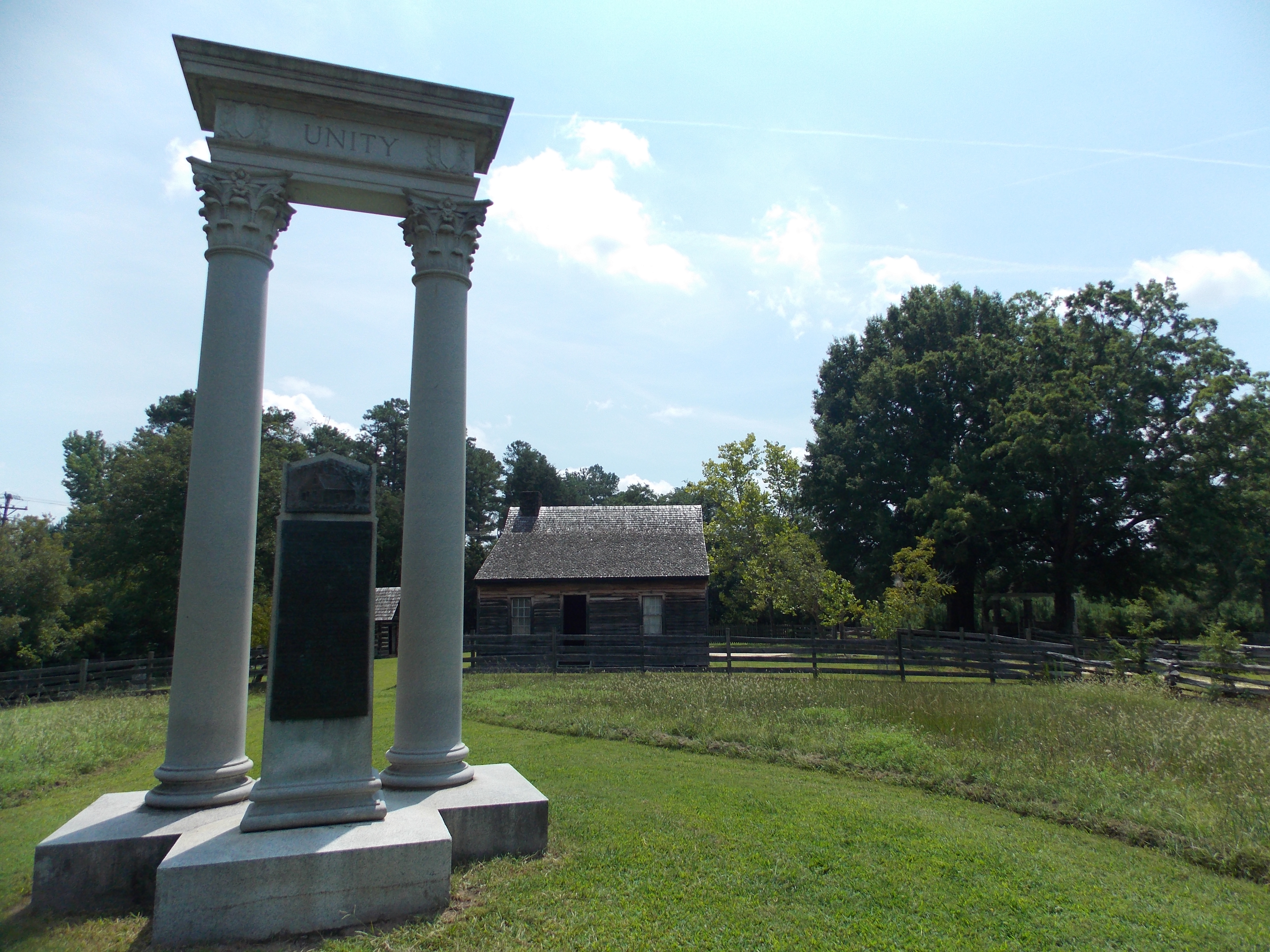Bennett Place

On April 26, 1865 the surrender finally happened. On a 325-acre farm owned by the Bennitt (or Bennett as it is more commonly written and referred to) family.
Confederate General Joseph Johnston surrendered the remnants of the Army of Tennessee and all Confederates still serving on the Eastern Seaboard. In total over 89,000 Confederate soldiers were covered within the confines of the surrender agreement.
Union General William T. Sherman, one of the architects of the Union victory had marched his army group from Georgia, north into the Carolinas, and now had extended his grasp around what was left of the Confederate Army of Tennessee.
Nine days after General Robert E. Lee surrendered the Army of Northern Virginia to General Ulysses S. Grant and the Army of the Potomac at Appomattox Court House, Virginia, Sherman met and proposed the for the surrender of Johnston.

However, these negotiations would be greatly influenced by the current political climate in Washington D.C. Johnston proposed not just for a military surrender but also wanted to “arrange the terms of a permanent peace” and include in any terms political considerations. Although, Sherman’s proposal reflected Grant’s, what had happened in the interim with the assassination of President Abraham had ratcheted the animosity toward the now fallen South immensely. President Andrew Johnson and his administration rejected the terms offered by Sherman on April 18th.
(For a complete outline of the April 18, 1865 terms of surrender follow the link in the “Sources” section)
Eight days later, the two army commanders met again and the surrender terms represented only military matters. Johnston after the refusal by Washington D.C. to accept the April 18th terms, received orders from Davis to disband the army and flee with the mounted troops to continue hostilities, wisely disobeyed the directive and agreed to the terms offered by Sherman.
(For a complete outline of the April 26, 1865 terms of surrender, please consult the same link)
The largest surrender in the American Civil War was settled.
Yet, unlike Appomattox Court House where the town and community slowly migrated from being clustered around the road network and in turn preserved for history the majority of the historic town, tragedy struck in North Carolina. The Bennett House and kitchen caught fire in 1921 and burnt to the ground.
Luckily sketches and Civil War-era photographs guided the rebuilding of the cabin and outbuildings. The Bennett Place is now a state historic site nestled into the urban sprawl of Durham.
The site is definitely worth a visit, as one could argue it was here that the Confederacy’s last hope of organized resistance east of the Mississippi was distinguished. Yes, General Richard Taylor would surrender at Citronelle, Alabama on May 4, 1865, but the numbers in Johnston’s surrender made resistance for the Confederacy completely hopeless. At this small cabin, whose owners had lost two sons and a son-in-law to the conflict, over 89,000 Confederate soldiers were paroled and were free to return home to embark on an uncertain future.

Appomattox Court House and the surrender of Lee’s Army of Northern Virginia does trumpet the surrender of Johnston’s Army of Tennessee at the Bennett Place. What I leave you with is this; what was more important to the successful conclusion of the Civil War for the United States? The surrender of one army? Or the surrender of an army and the entire Southeast Confederacy?
I’ll let you decide.
Sources
“This Astounding Close: The Road to Bennett Place” by Mark L. Bradley
Bennett Place, North Carolina Historic Site, Durham, North Carolina
(http://www.nchistoricsites.org/bennett/)
*Photography courtesy of a great friend, Heather Ball*
Don’t forget that the last military command to surrender was the C.S.S. Shenandoah on November 7, 1865. She was the only Confederate Ship to circumnavigate the globe. Don’t ignore the Confederate Navy.
James,
That is true and if not mistaken she surrendered in Liverpool, England. I was not purposely trying to ignore the Confederate Navy but instead showcasing that after Johnston’s surrender the game was pretty much up. Other Confederate units/armies (and ships) began surrendering accordingly.
Thanks for the observation and your interest/reading of ECW!
So glad to read about something other than Appomattox. I did not know about the Shenandoah either, so good job all around. I am still not certain, even today, if all the Confederates have surrendered, however.